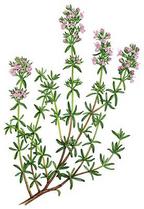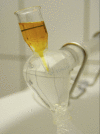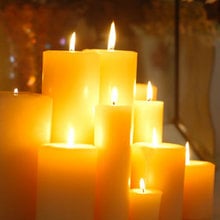 I have a cousin who’s a homeopath, and for months she’d been asking if she could “give me a bath.” I’d heard about–and been intrigued by–the practice, which is different from a standard homeopathy treatment in which remedies are taken orally, but is a longstanding tradition in anthroposophic medicine. So I agreed to take the plunge.
I have a cousin who’s a homeopath, and for months she’d been asking if she could “give me a bath.” I’d heard about–and been intrigued by–the practice, which is different from a standard homeopathy treatment in which remedies are taken orally, but is a longstanding tradition in anthroposophic medicine. So I agreed to take the plunge.
To me, the bath seemed more aromatherapy than homeopathy, except that she explained that the intention is for the remedy to be absorbed into the body through the skin, not just experienced as a scent. The idea is a sort of healing by submersion and osmosis.
We started by sitting on comfortable chairs and chatting. She asked me some questions about my general health, but mainly listened as I talked about the things that I’m working on in my body.
Then, out came the oils. Based on what I had said, she chose a dozen or so essential oils for me to smell. She asked me to tell her where the scents went in my body (one of them caused an odd hardening in my upper abdomen; another seemed to float around in my chest). She also asked me about each one, “do you believe that this oil can help you?”
That struck me – wait, it’s up to me to intuit which of these will heal me? It made me nervous (what if my intuition is wrong? what if that’s what needs healing in the first place?). I’m accustomed to the acupuncture model, where I tell my practitioner what’s going on (or what I think is going on), but she discerns where and how to treat me based on what my pulse tells her, not what my mouth can explain.
But there was also something empowering about choosing the instrument of my own healing, and when I inhaled one particular oil, I felt that chilly zing that I call my chi-patronus. It was familiar, strong, and earthy. It was thyme.
My cousin then drew the bath. She kept a thermometer in the water as the tub filled. She had taken my temperature, and the goal was for the bath to be one degree cooler than my body. This, she explained, would keep my blood flowing, allowing more of the oil to absorb into my system.

She dispersed the thyme oil into the bath–a mere three drops!–by first suspending it in olive oil, which she called a “carrier oil.” She hooked up an instrument called a vortex mechanism (pictured, right) to the faucet. Oil and water, after all, do not mix, so the vortex created in the mechanism churns the oil until it gets pulverized into what’s essentially a mist that can be evenly dispersed into the bath.
She then left the room and instructed me to step into the water and ask for help from “the being in the
oil.” I confess to being a little skeptical that there is such a thing. As I slid into the water, though, I decided
to just go back to the most basic instruction: ask for help. From whomever, whatever is in this water with me, I invite and welcome your help.
In the water, I thought a lot about buoyancy. My body floated up to the surface when I first got in, in a way that surprised me. Slowly
as I closed my eyes and started to concentrate on the experience–I
imagined ‘breathing in’ the oil with my lungs but also allowing it to
flow through my skin into my blood–I relaxed. After a moment, I noticed
that my arms and legs were still buoyant, floating. But my bottom, my
root chakra, had floated down to the floor of the tub. I didn’t know
what to make of that – was it groundedness, rootedness? Or was it
heaviness, burden?
The water looked almost greenish to
me when I opened my eyes, and the scent of the oil brought to mind
words like “earthy,” “real,” “rich” and “dusty.” I just kept focusing on the idea of inviting help, inviting help.
After 20 minutes or so, my cousin
came back into the room wielding a large soft towel and a heavy woolen
blanket. I stepped out and she wrapped me and helped me lay down on a
bed, where I was to rest for an hour. This cocooned experience was
lovely at first, though I got temporarily distracted by practical
questions like, “is my hair wet, and is it going to soak through the
pillow?” Once I lay down, I concentrated
on just releasing those thoughts – I know it’s in my nature to ask
those questions, but I would rather focus on the experience and trust
that nothing harmful would come of it.
Resting, I drifted into a light sleep, and then I opened my eyes and just let them go out of
focus as I rested my body. I thought a lot about the idea of the oil being absorbed into my blood. I
thought of it in terms of the time it takes for blood to travel through
my body, and how the healing properties of the oil have been sipped
into my body through the water.
After awhile, I felt awake – too awake. I started to feel the need to move, to stretch. I started up with those wandering-mind thoughts: “Am I sweating? What should my temperature be? How much time is left?” After
45 minutes, I decided I needed to come out, so I took my arms out of
the blanket, took my temperature (98.6 on the dot), and relaxed for the rest
of the time with my arms cooling down outside of the blankets.
I felt rested, hydrated (not just in a skin-level way), and calm. I slept better that night than I had in weeks.
I’m still processing what the whole
experience means, and how/if it might it help me to bring thyme into my
life in
other ways (through food, oils, growing it). But I am so glad that I
had this experience; to me, it was sort of a holistic mikveh, where
healing and connection are found within the mystery of water.
Have you ever experienced an anthroposophic, homeopathic, or aromatherapy bath? What’s your relationship with water?
(images:
http://paganwiccan.about.com/od/bookofshadows/ig/Magical-Herbs/Thyme.htm
and http://www.biomedcentral.com/1472-6882/8/61)

